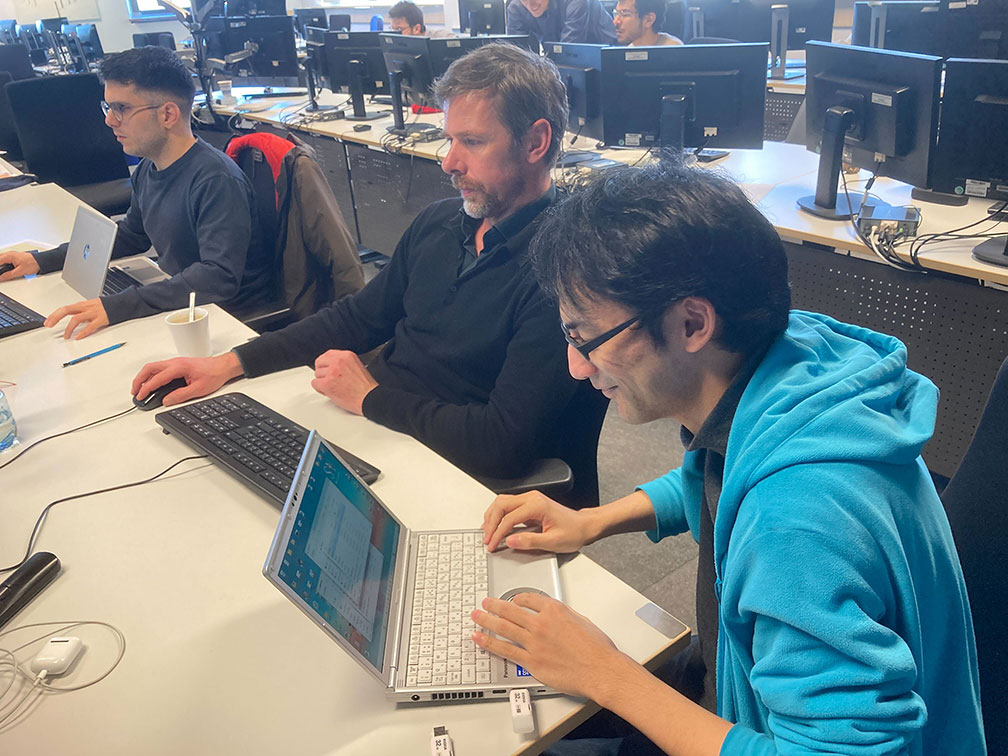Information of the Applicant from Kyoto University:
- Prof. Dr. Kazunobu Nagasaki, Institute of Advanced Energy, Kyoto University
Duration of Stay:
- March 9 to March 20, 2023
Aims:
- Building a new research network in Kyoto University
- Understanding magnetic confinement machine relevant physics
Visited Researchers and Institutions in Germany:
- Dr. Matthias Hirsch, Max-Planck-Institute for Plasma Physics, Greifswald, Germany
Motivation for Kyoto-DAAD Programme
Expected future energy source: realization of fusion reactors
The realization of fusion reactors, which are expected to be a future energy source, have been actively studied in both Japanese and German research institutes. The Max Planck Institute for Plasma Physics in Germany and the Institute of Advanced Energy at Kyoto University each have their own magnetic confinement fusion devices designed based on a concept known as the Stellarator/Heliotron and are tackling common physics issues. In this program, doctoral students from Kyoto University will participate in experiments on the large plasma experimental device, W7-X, and discuss research issues related to magnetic field confinement in order to establish a new research network with the Max Planck Institute for Plasma Physics.
Achievements and Outcomes of ECRs’ Stay
Understanding confinement and transport in magnetic confinement fusion plasmas
The relationship among confinement improvement, radial electric field, and density fluctuations has been experimentally investigated using microwave reflectometers in Heliotron J at the Institute of Advanced Energy, Kyoto University, with the aim of understanding confinement and transport in magnetic confinement fusion plasmas. A Ph.D. student, Yasuto Kondo, visited Max-Planck Institute for Plasma Physics, Germany, during the experimental term of the W7-X device to learn about the measurement methods and the role of the magnetic islands, and to discuss the design of the microwave reflectometer system with young German researchers, Dr. Thomas Windisch and others. Yasuto also had a discussion with Dr. Matthias Hirsch, a senior researcher of microwave reflectometers. He learned how experiments are conducted in the research environment at a large research institution, which is different from universities, and he gained valuable experience for working as a researcher in the future.
Outlook for the Project
The knowledge gained from this visit to Germany was valuable for future research activities, including a review of research policy and the system design used in Heliotron J, Kyoto University. In the future, we will make an effort to expand the reflectometer research network not only to stellarator/heliotron but also to tokamak-type experimental devices, and to contribute to the development of plasma physics research common to toroidal devices.

![[間:AI DA]: supporting international carrier development of early career researchers (ECRs)](/exchange/aida/wp-content/themes/kyoto-u-daad/img/logo-aida.png)



